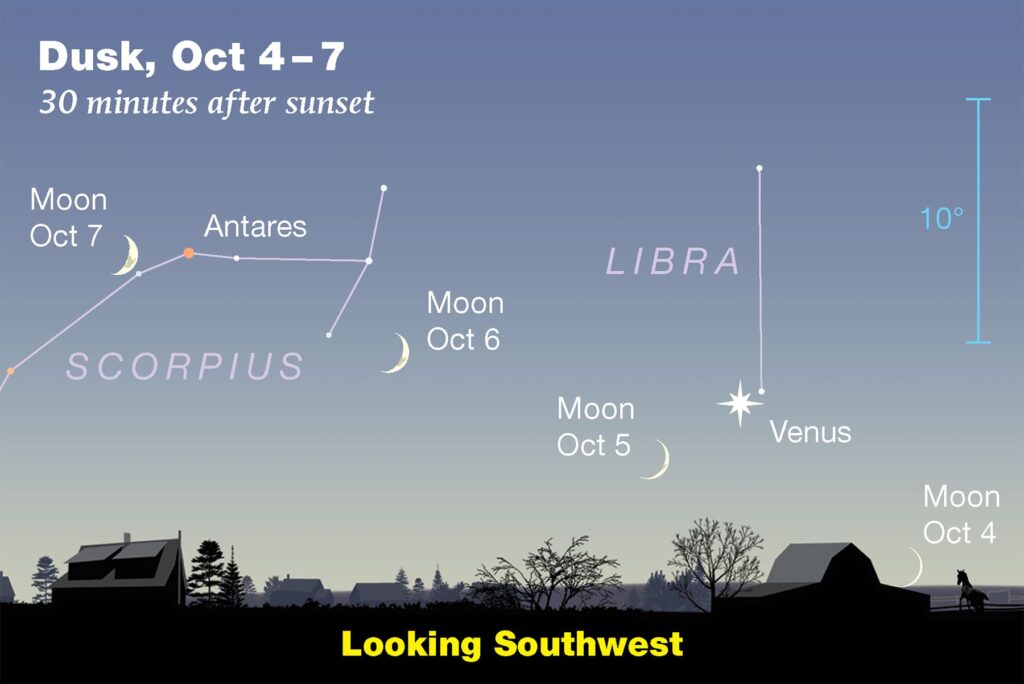
Keep an eye out for Venus, which is shining brightly on the southwestern horizon around 60 minutes after sunset. Venus is now hovering close to the horizon in the night sky this week. As we go through fall, the planet will rise higher and get brighter.
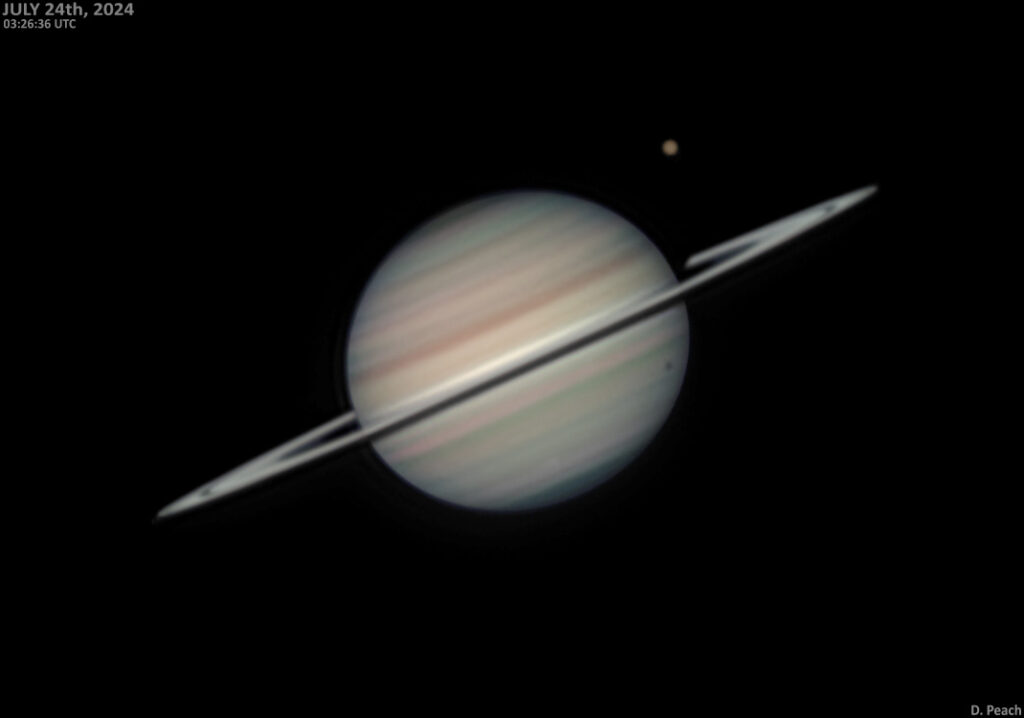
Saturn is also making its appearance in the southeastern sky after sunset visible for the entire night. It shines in the south around midnight. If you have a small telescope, you might catch a glimpse of its famous rings. Don’t wait too long, though—soon, the rings will be edge-on and might seem to vanish for a bit. Saturn is the brightest object in the area, so it is easy to identify below and right of the Great Square of Pegasus.
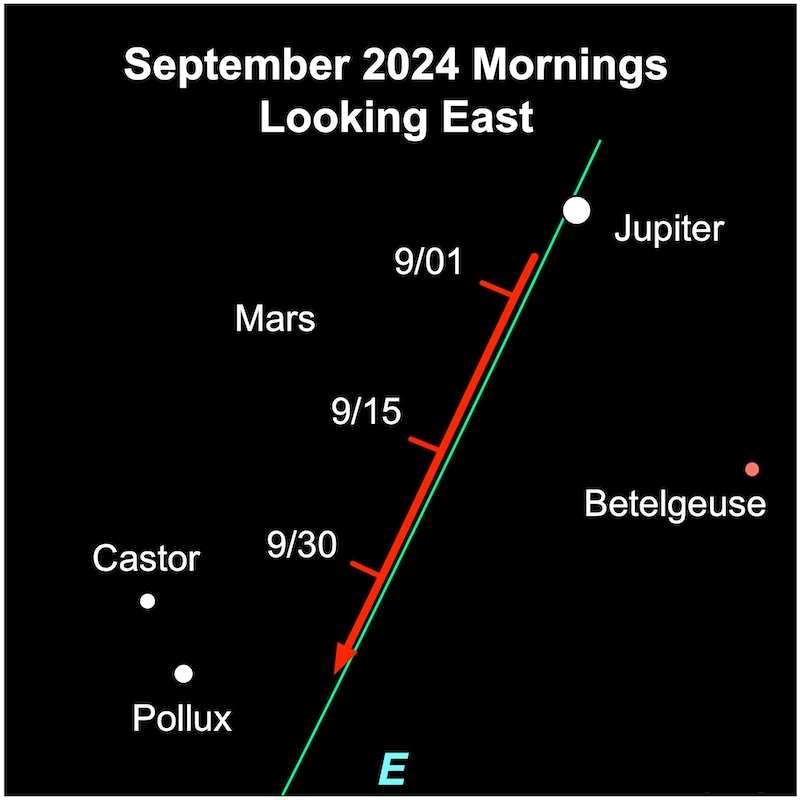
Jupiter is rising around 10:30 PM, shining as the fourth brightest object in our sky. Look for it between the horns of Taurus the Bull. During dawn, the planet is overhead toward the south being one of the last night objects to fade during sunrise.
Mars is in the constellation Gemini rising after midnight. During the rest of the year, the red planet will brighten as it comes closer to Earth in its orbit.
A comet called C/2023 A3 is going by Earth at the present time, however, it is difficult to see. If it keeps getting brighter, we may be able to find it with our unaided eyes in the middle of October. Wait and see!
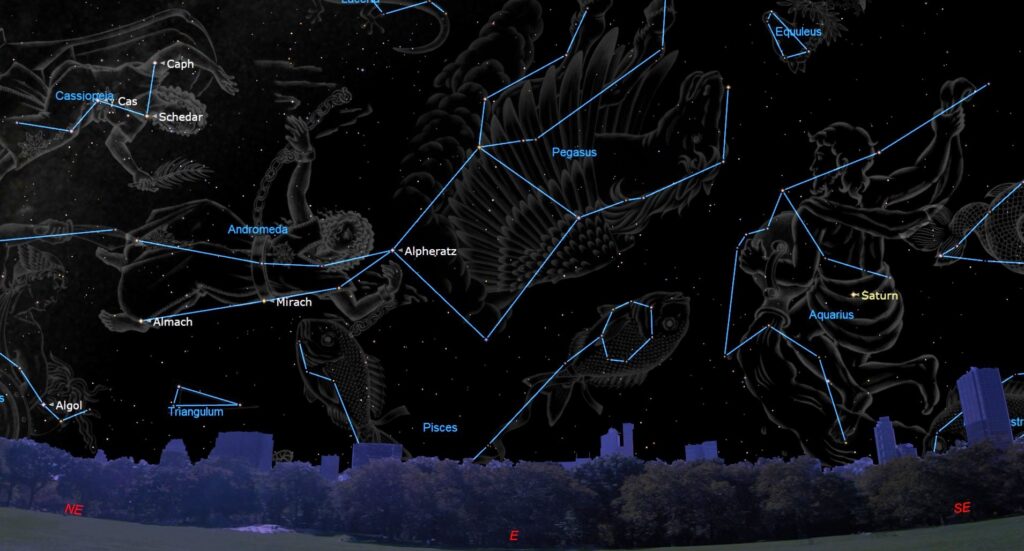
The Great Square of Pegasus is high in the eastern sky soon to be overhead to the south. It is part of the constellation of the flying horse from the Persius Chronicles.
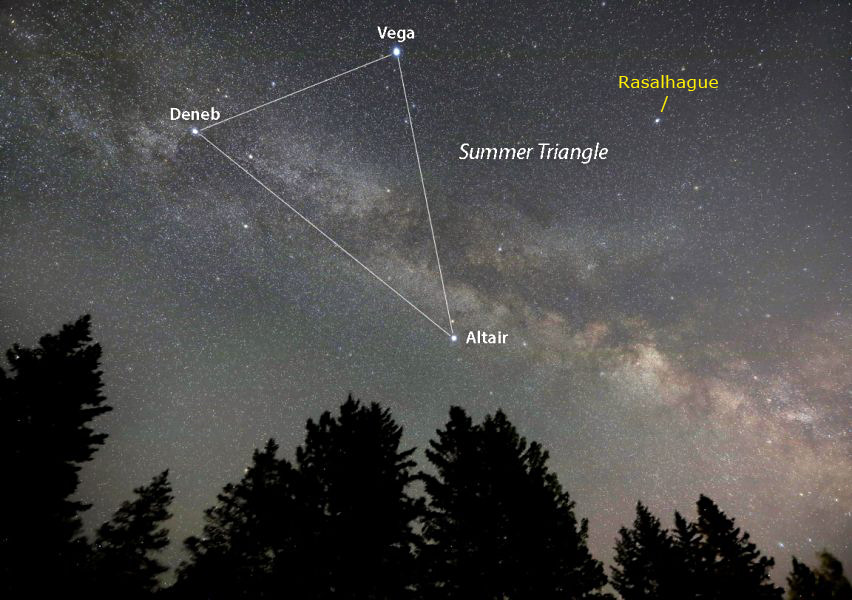
And don’t miss the Summer Triangle, consisting of the stars Vega, Altair, and Deneb. Vega, the brightest of the three, belongs to the constellation Lyra, while Altair is in Aquila the eagle, and Deneb is in Cygnus the swan. The Summer Triangle sits in the western part of the sky during the night.
Enjoy this cosmic spectacle throughout the week of October 4!
